An additional environmental benefit of green hydrogen production?
Study conducted in Canada suggests that oxygen, a by-product of green hydrogen production, could breathe new life into increasingly hypoxic ocean regions
Climate change, warming temperatures and an increase in nutrient delivery to the world ocean are causing a steady loss of oxygen in the marine environment and posing a grave threat to biodiversity.
It is estimated that the global ocean has lost about two per cent of its dissolved oxygen since the 1950s and is expected to lose up to four per cent by 2100. The loss rate can, however, be more intense and threatening in some locations, such as coastal regions, and can lead to shifts in species distribution, reductions in fish stocks and biodiversity, and changes to nutrient cycling that drive increased emissions of greenhouse gases such as nitrous oxide from the ocean, or unusual algal blooms. A growing region within the Gulf of St. Lawrence and the St. Lawrence Estuary is currently under threat from decreased oxygen in subsurface waters. Part of the oxygen loss can be attributed to climate-related reduction in the supply of oxygen-rich waters to the Gulf through the Cabot Strait between Nova Scotia and Newfoundland. Similarly, the Baltic Sea has a long history of oxygen-free deep waters and extended areas of low-oxygen waters.
Now, scientists are suggesting one way to stem the decrease would be to actually pump oxygen back into the ocean using a by-product of green hydrogen production.
A team of researchers from Dalhousie University in Halifax, Canada, McGill University in Montreal, Canada, and GEOMAR Helmholtz Centre for Ocean Research Kiel, Germany, has shown that the proposed green hydrogen industry could, regionally, produce more than enough oxygen to match what is currently being lost from the Gulf of St. Lawrence every year. Oxygen produced in the production of hydrogen would typically be released into the atmosphere. But it could also, potentially, be diverted into the ocean to re-oxygenate the marine environment. Researchers from GEOMAR contributed to the study that was led by Douglas Wallace, an ocean chemist and professor in Dalhousie’s Department of Oceanography. Its results are now published in the research journal Mitigation and Adaptation Strategies for Global Change.
Following the spreading of an inert, non-toxic tracer added to deep water about 130 kilometres from the proposed location of the hydrogen plants, they were able to show that injected oxygen would travel to threatened regions within about one and a half to four years. A similar concept would be conceivable also for the Baltic Sea.
However, the study identified a number of research questions that need to be addressed before the oxygen by-product of a new industry could be put to use to mitigating one of the major impacts of climate change on marine biodiversity. Dr. Toste Tanhua from GEOMAR who participated in the study, points out that this topic certainly is an area where transatlantic cooperation between scientists, engineers and policy specialists would be beneficial for designing pilot experiments in the two ocean regions.
Original publication:
Wallace, D.W.R., Jutras, M., Nesbitt, W.A. et al. (2024): Can green hydrogen production be used to mitigate ocean deoxygenation? A scenario from the Gulf of St. Lawrence. Mitigation and Adaptation Strategies for Global Change, doi: https://doi.org/10.1007/s11027-023-10094-1
Project funding:
The study has been supported through The Marine Environmental Observation, Prediction and Response Network (MEOPAR), a Canadian network of centres of excellence, as well as the Réseau Québec maritime (RQM), an organisation that brings together research and sustainable maritime development.
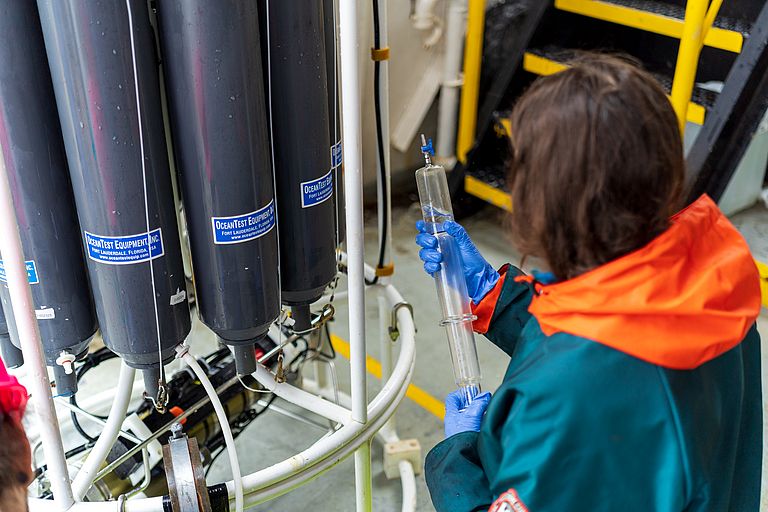
Onboard the research vessel CORIOLIS II, water samples are collected for further analyses. Photo: Joerg Behnke, National Research Council Canada
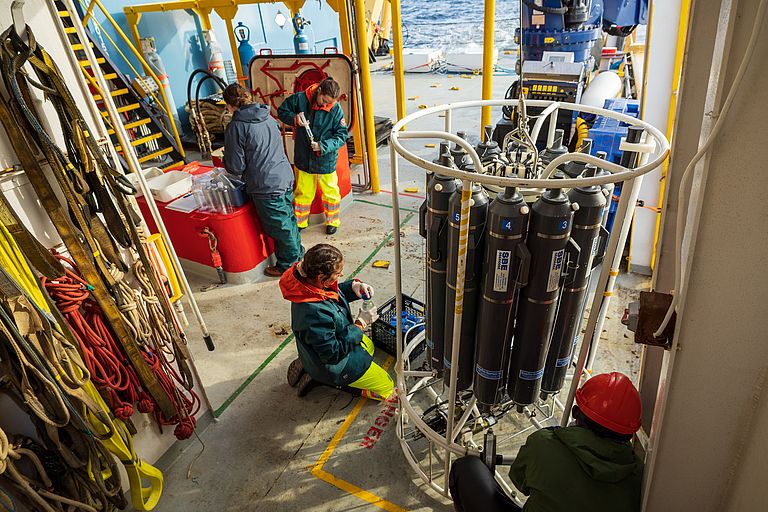
During the Tracer Release Experiment (TReX), water samples are collected with a rosette water sampler. Photo: Joerg Behnke, National Research Council Canada
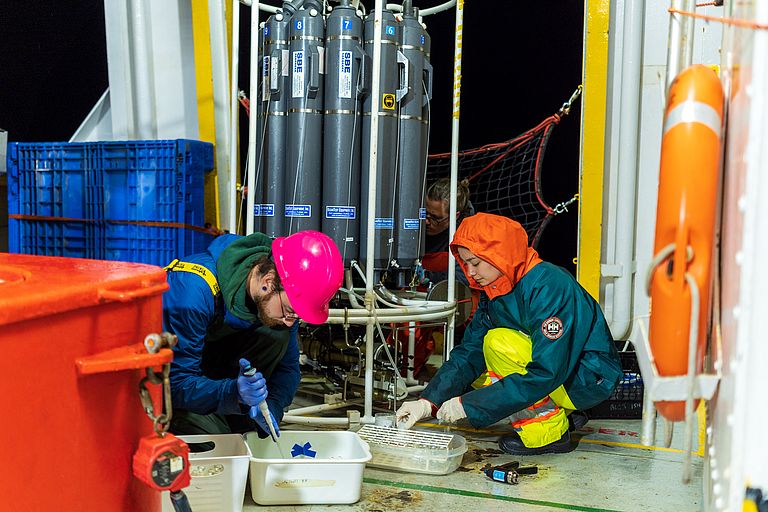
Processing of water samples on board the research vessel CORIOLIS II. Photo: Joerg Behnke, National Research Council Canada
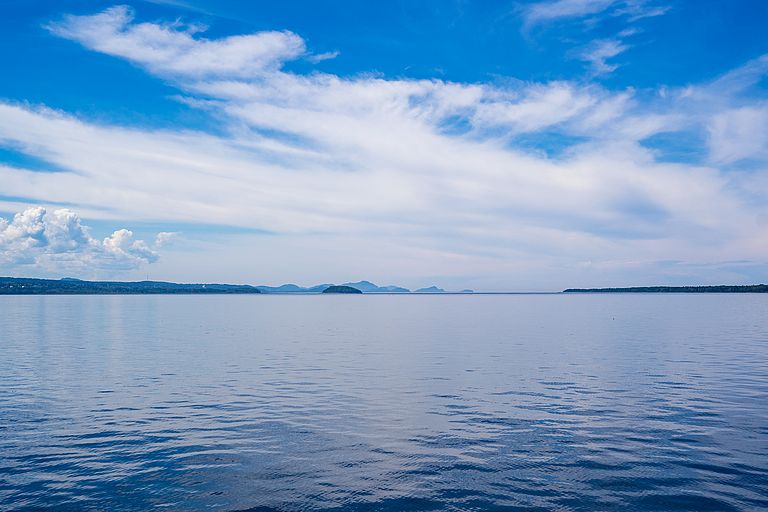
The Gulf of St. Lawrence is supplied with increasingly less oxygen due to climate change. Photo: Joerg Behnke, National Research Council Canada
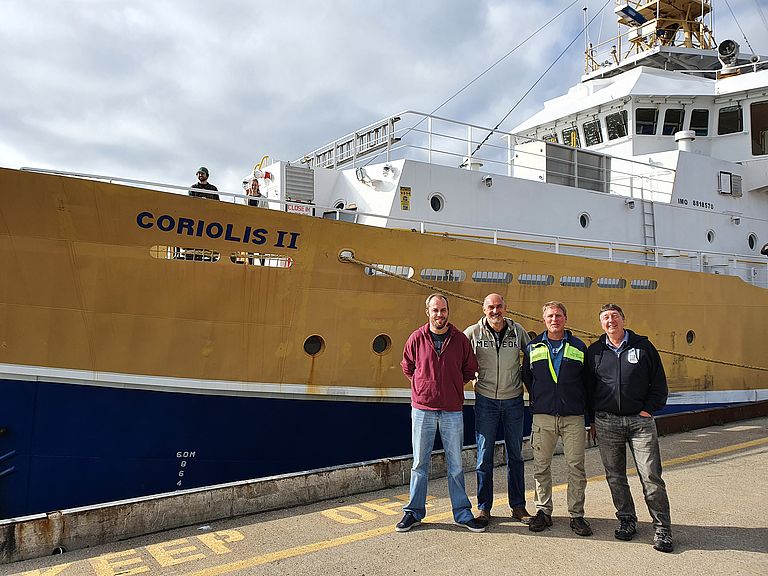
GEOMAR researchers René Witt, Mario Müller and Dr. Toste Tanhua with Professor Dr. Douglas Wallace, head of the TReX project in front of the research vessel CORIOLIS II. Photo: Tracer Release Experiment (TReX)


